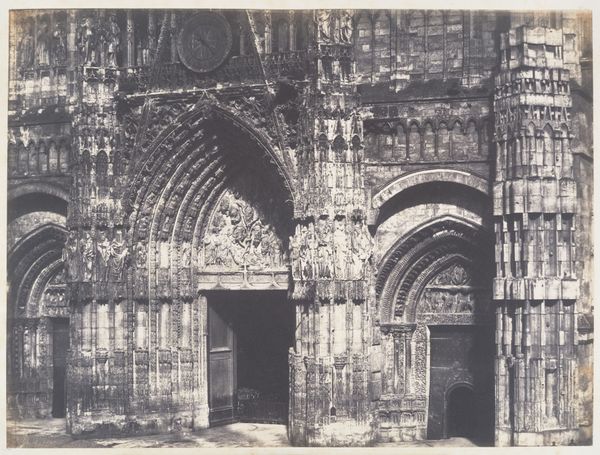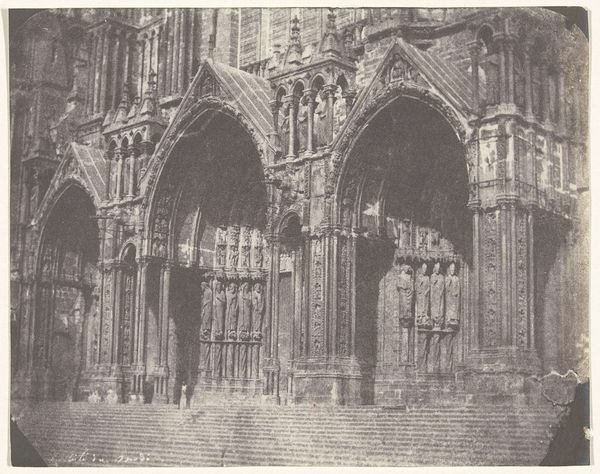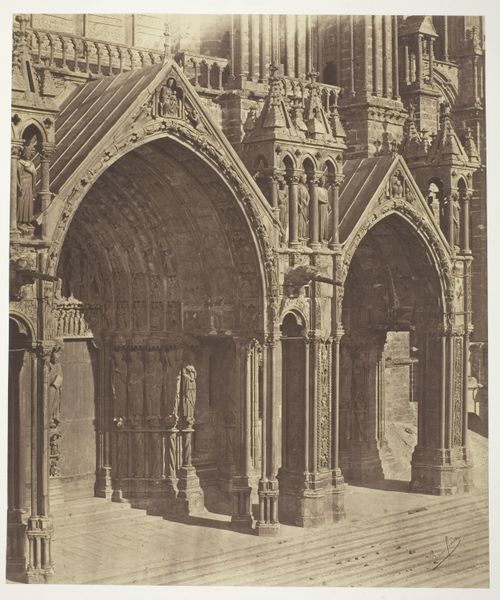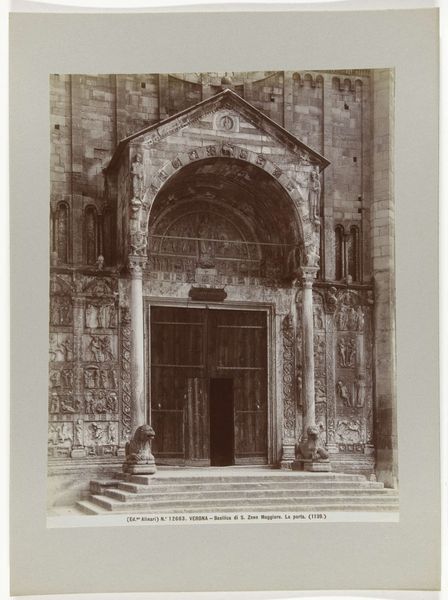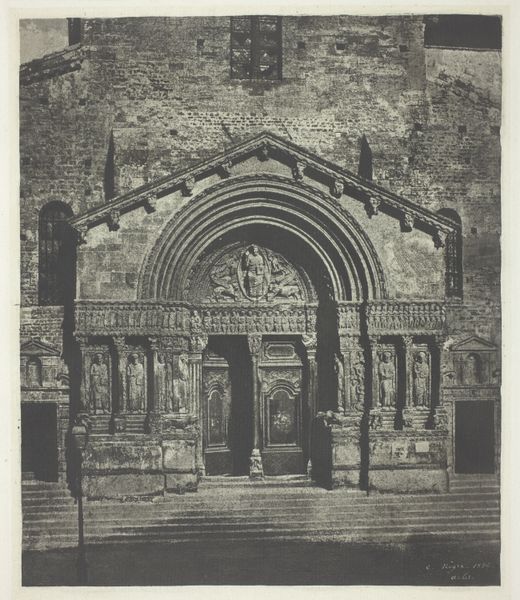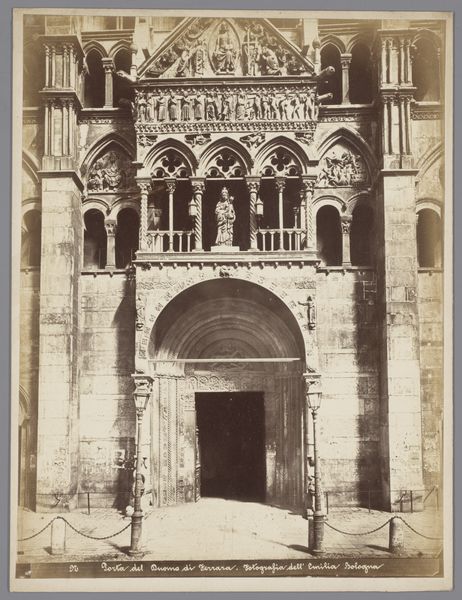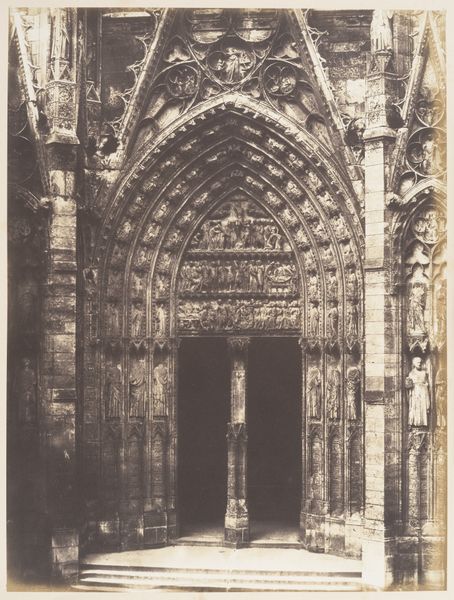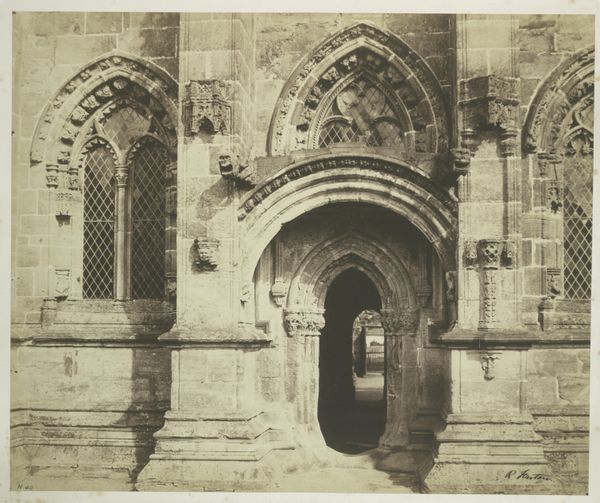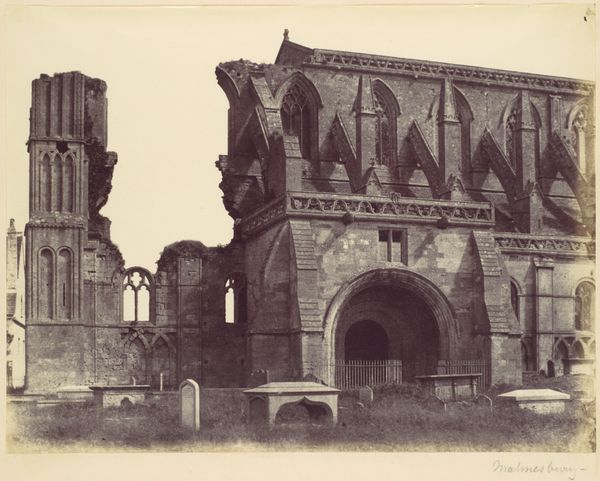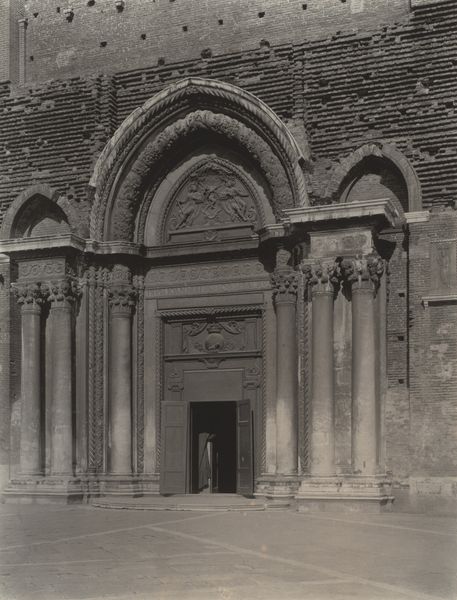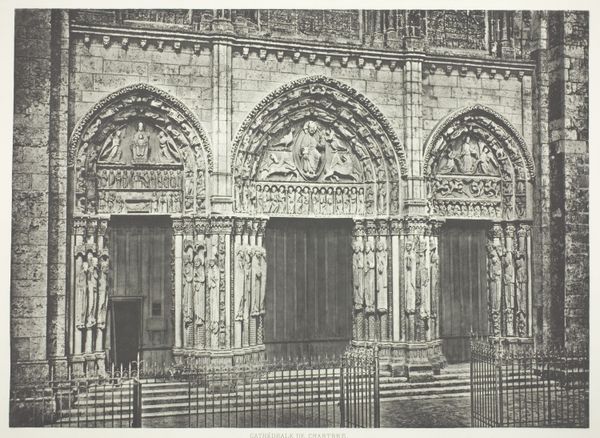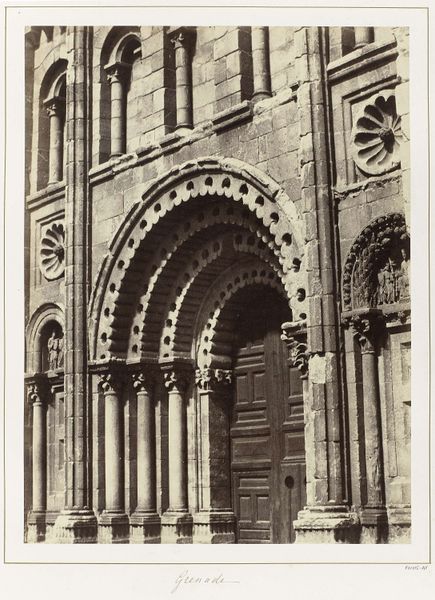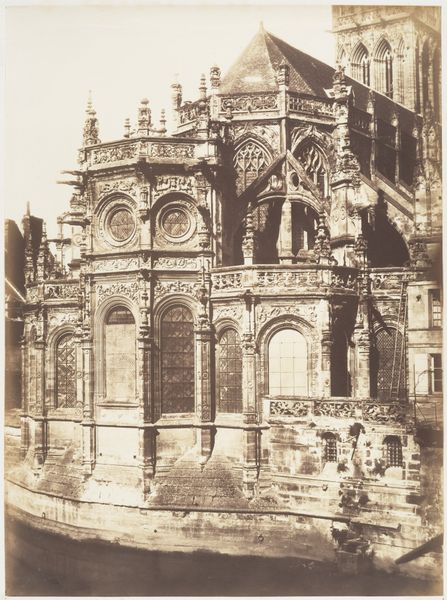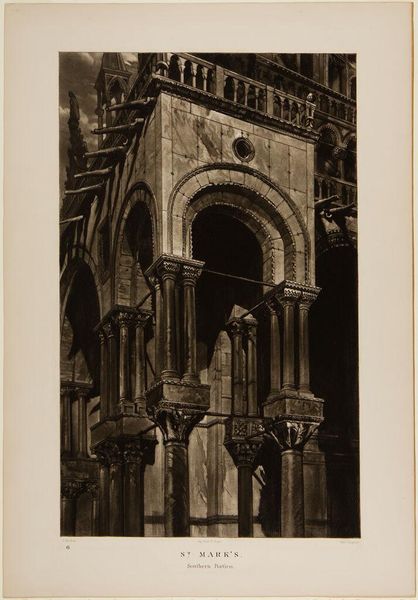
Notre Dame de Poitiers (Vienne), West Facade Possibly 1854 - 1863
0:00
0:00
silver, print, etching, photography, architecture
#
16_19th-century
#
silver
# print
#
etching
#
landscape
#
photography
#
romanesque
#
ancient-mediterranean
#
france
#
19th century
#
cityscape
#
architecture
Dimensions: 36.3 × 44.9 cm (image/paper); 51.2 × 68.9 cm (mount)
Copyright: Public Domain
Curator: This remarkable silver print captures the west facade of Notre Dame de Poitiers, a Romanesque church in France, sometime between 1854 and 1863 by the Bisson Frères. Editor: It's arresting, isn't it? The photograph exudes an aura of austere solemnity. It's the textures and the details for me: those heavily carved arches, the weathered stone, and the hint of life at its base, are steeped in time and tradition. Curator: Indeed. The Bisson brothers, pioneers of architectural photography, seemed intent on conveying the enduring spirit and sacred authority of this ancient place. You notice how the silver print gives a luminous quality to the stonework? Almost an otherworldly feel. Editor: Almost ghostly. What strikes me is the implied tension between the religious institution, which held significant socio-political influence and the figures depicted at the base—they appear to be impoverished. This contrast highlights the historical disparities within religious structures and patronage. Curator: A sharp observation. Think about the layered meanings imbued within the church's architecture itself. Romanesque design with its round arches and solid structure represented an architectural response to specific needs in an era of pilgrimage and political upheaval. What are the values and assumptions reflected? Editor: Control and dominance. While spaces for communal spiritual experience may provide sanctuary, their grandness also asserted dominance. These photographs provide opportunities for us to consider the agency, or lack thereof, experienced by people of color. Curator: Photography offered a new form of documentation and veneration, one that simultaneously captured its physical form and symbolized cultural continuity, echoing traditions across millennia. But your reading reminds me that no symbol is ever neutral, its power is always interpreted through specific contexts. Editor: Absolutely, context is crucial, always. A building meant to inspire devotion can just as easily reflect deeply rooted systems of power. Curator: It leaves us pondering the narratives etched in stone. Editor: Or captured in silver. A layered history, indeed.
Comments
No comments
Be the first to comment and join the conversation on the ultimate creative platform.
